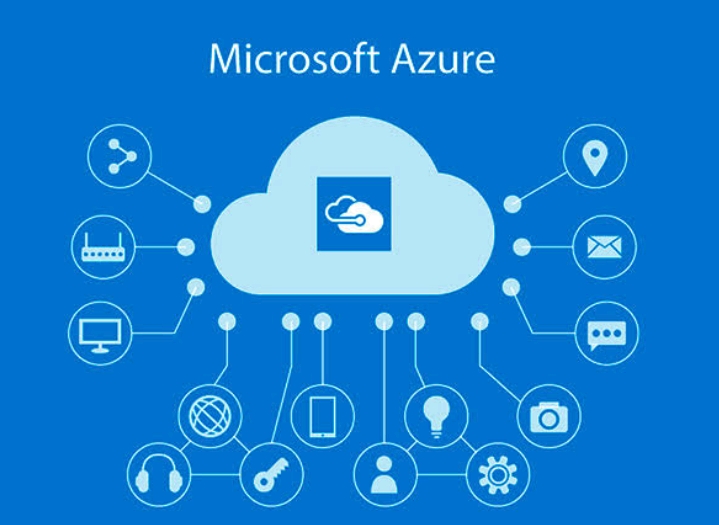Let's Talk Cloud: Deploying and Managing Azure Compute Resources
 Samuel Happiness
Samuel Happiness
Hey there, cloud enthusiasts! Welcome back to our "Let's Talk Cloud" series. Today, we're diving into what many consider the heart of Azure—compute resources. After all, storage is great for keeping your data, but you need compute power to actually do something with that data!
The Azure Compute Family: More Options Than a Coffee Shop Menu
One thing that initially surprises many people about Azure is just how many different compute options are available. It's not just "here's a virtual machine, good luck!" Microsoft has created a spectrum of compute services designed to match different workloads, technical requirements, and team preferences.
Let's break down your main options:
Virtual Machines: The Classic Choice
Azure Virtual Machines (VMs) are probably what most people think of first when it comes to cloud computing. They're essentially computers in the cloud that you can configure almost exactly like physical servers.
What makes Azure VMs special is the sheer variety of options—from budget-friendly burstable VMs perfect for dev/test environments to massive memory-optimized machines for databases, and specialized GPU-enabled instances for AI workloads.
Pro tip: Take advantage of Azure Spot VMs for non-critical workloads. These use excess datacenter capacity at up to 90% discount, though they can be deallocated when Azure needs the capacity back.
Virtual Machine Scale Sets: Elasticity on Autopilot
What if your application needs to handle variable loads? That's where VM Scale Sets come in. They let you create and manage a group of identical, load-balanced VMs that can automatically scale up or down based on demand or schedules.
Imagine your e-commerce site during a flash sale—Scale Sets can automatically add more servers when traffic spikes and remove them when it subsides, all without manual intervention. It's like having a data center that breathes in and out with your workload.
App Service: PaaS for the Win
Not everyone wants to manage operating systems, patches, and infrastructure. If you're primarily focused on your application code, Azure App Service might be your best friend. This Platform-as-a-Service (PaaS) offering lets you deploy web apps, API apps, or mobile backends without worrying about the underlying infrastructure.
With App Service, you get features like automatic scaling, CI/CD integration, and deployment slots (for zero-downtime updates) right out of the box. It supports a variety of languages and frameworks including .NET, Java, Node.js, Python, and PHP.
Azure Functions: Serverless for the Win
Sometimes you don't need a full application running continuously—you just need code that executes in response to events. That's where Azure Functions shines with its serverless approach.
Functions let you run small pieces of code ("functions") that are triggered by events like HTTP requests, timer schedules, or changes in your data. You pay only for the compute time you consume, and you don't need to provision or manage any servers.
I've seen teams use Functions for everything from processing uploaded images to scheduled database cleanups and webhook handlers. They're particularly powerful when combined with other Azure services in event-driven architectures.
Azure Kubernetes Service (AKS): Container Orchestration Made Easy
Containers have revolutionized how we package and deploy applications, and Kubernetes has become the de facto standard for orchestrating containerized workloads. Azure Kubernetes Service takes the complexity out of running Kubernetes by managing the control plane for you.
With AKS, you can focus on deploying your containerized applications without becoming a Kubernetes expert overnight. It integrates seamlessly with other Azure services like Monitor, Network, and Storage, making it easier to build complex, containerized applications.
Azure Container Instances: Containers Without the Orchestration
Sometimes you just need to run a container quickly without setting up a whole Kubernetes cluster. Azure Container Instances (ACI) lets you run containers with no orchestration required and with per-second billing.
It's perfect for simple applications, batch jobs, or CI/CD scenarios where you need containers on demand without long-term infrastructure.
Right-Sizing: The Art of Balancing Performance and Cost
One of the biggest advantages of cloud computing is the ability to match your resources to your actual needs. Azure provides several tools to help with this:
- Azure Advisor: Provides recommendations for optimizing your resources
- Azure Cost Management: Helps track and analyze your spending
- Azure Monitor: Collects performance metrics to inform your scaling decisions
Remember, the largest instance size isn't always the best choice! Start with a reasonable size and scale up only when your monitoring data shows you need more resources.
High Availability Strategies
In the cloud, you need to design for failure. Here are some strategies to ensure your applications stay up and running:
- Availability Sets: Group VMs across fault and update domains to protect against hardware failures and planned maintenance
- Availability Zones: Deploy resources across physically separate datacenters within a region
- Azure Site Recovery: Replicate workloads from one region to another for disaster recovery
The right strategy depends on your application's requirements and budget. For critical workloads, a multi-region approach using Azure Traffic Manager or Front Door can provide the highest level of availability.
Managing at Scale
As your Azure footprint grows, manual management becomes impractical. Here are some approaches for managing compute resources at scale:
- Azure Resource Manager templates: Define your infrastructure as code for consistent deployments
- Azure Policy: Enforce organizational standards across your Azure resources
- Azure Automation: Automate routine tasks with runbooks
- Azure DevOps or GitHub Actions: Implement CI/CD pipelines for both your applications and infrastructure
Until next time, keep computing in the cloud!
Subscribe to my newsletter
Read articles from Samuel Happiness directly inside your inbox. Subscribe to the newsletter, and don't miss out.
Written by

Samuel Happiness
Samuel Happiness
I'm a passionate and innovative software developer, I thrive on crafting elegant solutions that drive real-world impact. With a strong foundation in hands-on experience in mobile and web development, I am adept at turning complex problems into user-friendly applications.